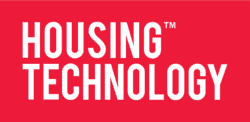Having worked within the IT side of housing for 20 years and witnessed massive developments in technology, the advances are now at a rate many could never have imagined beyond the realms of science fiction.
In housing, the primary focus for IT systems so far has been to improve organisational processes and trying to do more with less. Housing IT systems were initially developed to migrate from paper to digital, and then the focus moved onto process improvements and, more recently, towards channel shift. Digital advances have undoubtedly been made, but can we do more?
Are we really improving lives?
A common theme of the past few years has been channel shift, accompanied by bold claims about how the deployment of, for example, self-service portals for tenants is “transforming the lives of our tenants” (sound familiar?), but are they really transforming lives?
Let’s look at some of the wider issues that housing providers need to consider: millions of people classified as fuel poor; an ageing population; growing numbers of mental health problems; and crime and anti-social behaviour. The current infrastructure is simply not equipped to cater for all these diverse demands.
I have written before in Housing Technology on how technology can be used to tackle fuel poverty and crime so for this article I’m looking at the wellbeing of our tenants and considering how some existing and emerging technologies can help tenants to actually improve their lives.
How do we help the growing number of older people living alone and those suffering from mental illness?
Monitoring
We’re already using ‘wearable tech’ in its most simplistic form by providing panic buttons that can be worn by vulnerable people. Using smart devices coupled with smart home technology means we can start to monitor the wellbeing of vulnerable people and therefore reduce the need for them to be taken into care or become totally reliant on home visits.
Sensors can be used to monitor movement of vulnerable people around their home. We can track their normal routes through their properties and the time they spend in different rooms.
Obviously monitoring people is a delicate subject. However, this could help us track and build predictive models of how people move around and forecast what they would normally do and then compare that to their current activity. For example, if they haven’t got out of bed within their usual timeframe then there may be a problem. Combine this with data from other monitoring or wearable systems that are tracking breathing or heart rates, systems can then determine if we need to intervene and check to see if everything is OK. The first line of intervention can come from AI and conversational technology through the form of a phone call, text message or chat via a smart device. We only need to hand off to a human once the AI has determined that we really do have a problem.
Uber care
I can imagine a future where we are talking about Uber-style services for anything and everything; will care and support be any different?
The NHS has partnered with a start-up called Cera to offer Uber-style care to the elderly in their homes. This is focused on matching patients with carers in an efficient way to minimise costs for the provider and maximise the quality of care.
Like them or loathe them, Uber-style or ‘gig economy’ services will increase and become more commonplace as demands for efficiency gains continue to drive us all.
Predictive analytics
At ROCC, we’re investing heavily in predictive analytics and researching the benefits housing organisations might be able to gain from being able to accurately predict what is likely to happen in various situations. Being reactive and responsive is expensive, so the more we can predict events, the more efficient we can become.
If we want to provide good care for tenants, we can use predictive analytics to determine when they might need our help. Predictive analytics can also enable better property management by forecasting what is likely to happen and adjusting maintenance plans accordingly, instead of just having a routine maintenance schedule. If we can prevent problems, then we save money. And by being less reactive, we are improving the lives of our tenants because they’ll suffer less disruption and inconvenience.
AI and wellbeing
In a future with more elderly tenants living alone and with more of the population becoming aware of their own mental and physical wellbeing, coupled with increasing pressures to save money, we can think about how AI might keep people happier and healthier.
The NHS already offers services such as CBT via an instant message-based online portal and there are many smartphone apps to help with overall wellbeing. It’s not a huge leap to imagine a future where we’ve replaced the therapist with AI for individuals that have minor wellbeing issues.
It’s an exciting but confusing time for anyone looking into what these technologies can do for our businesses and the world. Collaboration between technology providers and housing organisations is key to determine the best-use cases to couple improved services and better lives without infringing privacy and human rights.
Peter Luck is the director of operations (Uniclass) at ROCC.

